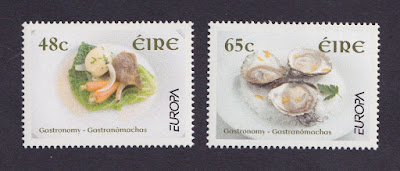Issue Date: 21 April 2023 Printing Technique: Offset
Face Value: 130
Photo: Hereana MOE
Author: FARE RATA 2023
Perforation: 26x36
Number of stamps per presentation 25
Number of stamps 25
Scented stamp : Seaweed “Rimu Vine”
The Rimu Vine (Caulerpa chemnitzia) nicknamed «green caviar», is a seaweed very popular in French Polynesia and has a strong potential in the South Pacific market (New Zealand, Fiji, Samoa, etc) but also internationally, especially in Japan.
The gathering activity of this species is traditional in many Pacific islands, especially in French Polynesia, in the Austral archipelago. The typical recipe is to mix fresh seaweed with coconut milk, to obtain a delicate dish combining the iodized taste of seaweed and the sweetness of coconut milk.
Algae have beneficial properties for health. They are rich in minerals, vitamins, fiber, and polyunsaturated fatty acids, and have recognized antioxidant and antimicrobial activities. These nutritional properties are very interesting to reduce cardiovascular risks.
It is noted that in ancient times, seaweed was reserved for women because they were not allowed to eat pork, turtle, coconut and banana. So they were picking algae to supplement their diet.
Today, French Polynesia wants to develop an island rural aquaculture aimed at the commercial development of remote islands but also to promote food self-sufficiency in Polynesia. One of the country’s objectives is therefore to develop algoculture. In addition to the nutritional purpose, algae can be exploited in other fields such as cosmetics or pharmacology. Thus, a research program agreement was established between the Ministry of Marine Resources and the University of French Polynesia (UPF) to identify the various aspects of the exploitation of the Rimu.
The Rimu vine exists only in the wild in the Southern Archipelago. This resource remains fragile and sensitive to poor environmental conditions. In addition, an unreported exploitation of the resource can lead to its extinction. This is why cultivation trials have been underway for several years to create sufficient biomass to feed the Polynesian market, but also to preserve this precious local resource.
Fare Rata, the Polynesia Post Office is pleased to be able to highlight through this scent stamp, the «rimu vine», hoping to make you want to taste it but also to contribute to this effort to preserve our underwater biodiversity, so fragile.
Author: FARE RATA 2023
Perforation: 26x36
Number of stamps per presentation 25
Number of stamps 25
Scented stamp : Seaweed “Rimu Vine”
The Rimu Vine (Caulerpa chemnitzia) nicknamed «green caviar», is a seaweed very popular in French Polynesia and has a strong potential in the South Pacific market (New Zealand, Fiji, Samoa, etc) but also internationally, especially in Japan.
The gathering activity of this species is traditional in many Pacific islands, especially in French Polynesia, in the Austral archipelago. The typical recipe is to mix fresh seaweed with coconut milk, to obtain a delicate dish combining the iodized taste of seaweed and the sweetness of coconut milk.
Algae have beneficial properties for health. They are rich in minerals, vitamins, fiber, and polyunsaturated fatty acids, and have recognized antioxidant and antimicrobial activities. These nutritional properties are very interesting to reduce cardiovascular risks.
It is noted that in ancient times, seaweed was reserved for women because they were not allowed to eat pork, turtle, coconut and banana. So they were picking algae to supplement their diet.
Today, French Polynesia wants to develop an island rural aquaculture aimed at the commercial development of remote islands but also to promote food self-sufficiency in Polynesia. One of the country’s objectives is therefore to develop algoculture. In addition to the nutritional purpose, algae can be exploited in other fields such as cosmetics or pharmacology. Thus, a research program agreement was established between the Ministry of Marine Resources and the University of French Polynesia (UPF) to identify the various aspects of the exploitation of the Rimu.
The Rimu vine exists only in the wild in the Southern Archipelago. This resource remains fragile and sensitive to poor environmental conditions. In addition, an unreported exploitation of the resource can lead to its extinction. This is why cultivation trials have been underway for several years to create sufficient biomass to feed the Polynesian market, but also to preserve this precious local resource.
Fare Rata, the Polynesia Post Office is pleased to be able to highlight through this scent stamp, the «rimu vine», hoping to make you want to taste it but also to contribute to this effort to preserve our underwater biodiversity, so fragile.







